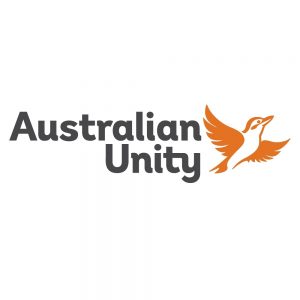Big news for Nepalese students dreaming of studying in Australia! Nepal received its official student visa reassessment from the Department of Home Affairs into Assessment Level 2 after seven years of holding Level 3 status. The new classification at Assessment Level 2 enables Nepalese students to enhance their chances of obtaining an Australian student visa.
Details About Nepal’s Level 2 Reclassification
In early April 2025 the Australian Department of Home Affairs declared Nepal received Assessment Level 2 status. The improved student visa applicant profile of Nepal now makes it easier for Nepalese students to obtain visas under this category.
- What happened: Nepal moved from Assessment Level 3 to Level 2.
- When: Announced in April 2025.
- Who announced it: Australia’s Department of Home Affairs (DHA).
What Does This Mean for Nepalese Students?
The shift to Assessment Level 2 brings numerous benefits for Nepalese students aiming to study in Australia.
Simplified Visa Process
A lower assessment level means fewer financial and documentation requirements. Students may no longer need to provide as much evidence of financial stability and English proficiency, making the visa process smoother and faster.
Increased Opportunities
With easier visa approval, more Nepalese students will be able to access high-quality Australian education. The reduced documentation burden will encourage a greater number of applicants to pursue higher education in Australia.
Positive Sentiment
This change signals trust and confidence in Nepalese students by the Australian government. It reflects an improved compliance record and a reduced perception of risk, making Australian institutions more welcoming to Nepalese applicants.
Historical Context of Nepal’s Assessment Levels
Nepal was at Assessment Level 2 before 2017, making it easier for students to secure visas. In March 2018, Nepal was moved to Assessment Level 3, leading to stricter requirements. After seven years at Level 3, Nepal has now returned to Assessment Level 2 in April 2025, restoring a more favorable visa process for Nepalese students.
Impact of the 2019 Shift to Level 3
When Nepal was placed in Assessment Level 3, students faced stricter visa requirements. Key challenges included:
- Higher financial documentation requirements.
- Stricter English proficiency standards.
- Increased scrutiny on visa applications, leading to higher rejection rates.
- More restrictions on student work rights – Making it harder for students to support themselves while studying.
This deterred many Nepalese students from applying or forced them to seek alternative destinations for education.
Understanding Australia Assessment Levels
How Assessment Levels Work?
Australia categorizes student visa applicants by country into different assessment levels (ALs) based on perceived immigration risk. The lower the assessment level, the easier the visa process.
Why Do Assessment Levels Exist?
Assessment levels exist to manage visa integrity and reduce risks related to overstay and non-compliance. The DHA uses these levels to determine the documentation required for student visa applicants.
Levels and Risks
- Level 1: Lowest risk, simplest visa process with minimal requirements.
- Level 2: Moderate risk, reduced documentation requirements compared to Level 3.
- Level 3: Higher risk, strictest visa requirements with the most documentation needed.
Assessment Level of Different Countries
| Country | Assessment Level (2025) |
| Nepal | Level 2 |
| India | Level 2 |
| Pakistan | Level 3 |
| Bangladesh | Level 3 |
| Sri Lanka | Level 2 |
Factors That Affect Assessment Levels
Several factors contribute to a country’s assessment level, including:
- Immigration risk: Visa overstay and non-compliance rates.
- Compliance history: Past trends of students following visa regulations.
- Reputation of Educational Institutions: Universities’ track record with international students.
- Fraudulent Applications: History of document authenticity issues.
- Economic stability of the Country: More stable economies tend to have lower risk classifications.
How Assessment Levels Affect Visa Approval Rates?
A country’s assessment level directly impacts visa approval rates. Lower assessment levels lead to higher approval rates, as students from these countries face fewer scrutiny and documentation requirements.
For Nepalese students, moving to Assessment Level 2 means:
- Higher chances of visa approval – More students will be granted visas.
- Less financial and documentation burden – Making it easier for families to support students.
- Faster visa processing times – Reducing delays in academic enrollments.
- More accessibility to top Australian universities – Since lower-risk countries are often preferred by educational institutions.
- Lower Rejection Rates – With fewer documentation requirements, visa refusals due to incomplete paperwork or financial constraints will decrease.
- Greater student confidence in the Application process – Students and families will have more certainty about approvals, encouraging more applicants to pursue higher education in Australia.
- Better opportunities for Post-study work – A lower-risk assessment may positively impact post-graduation opportunities, as international students from lower-risk countries are often favored for work opportunities.
Now is The Perfect Time: Apply Now With Grace International
With Nepal back at Assessment Level 2, there has never been a better time to apply for an Australian student visa. The process is easier, approval rates are higher, and opportunities are abundant!
Apply now with Grace International! As a trusted consultancy, we offer expert guidance to help Nepalese students successfully apply for Australian student visas.








